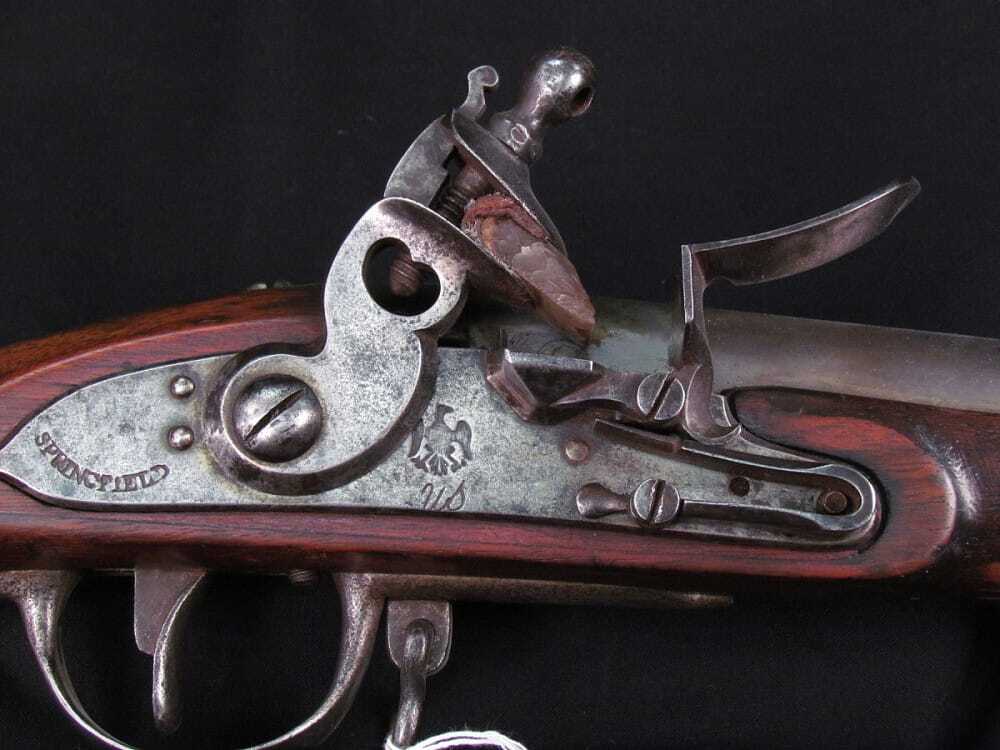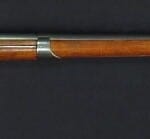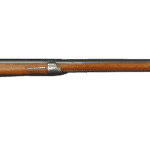
Introduction
The U.S. Model 1795 Musket holds a pivotal place in American military history as the first standard-issue musket produced within the United States. Designed in response to the nation’s pressing need for a domestically manufactured, standardized firearm, the Model 1795 marked the beginning of America’s independent firearms industry. Inspired by the French Charleville Model 1763/66, this musket equipped American forces through the late 18th and early 19th centuries, proving essential in conflicts such as the Quasi-War and the War of 1812. Its development at the Springfield Armory and Harpers Ferry Armory set the foundation for subsequent U.S. military small arms, making it a critical milestone in the evolution of American weaponry.
Background: The Need for a Standardized Musket

Following the Revolutionary War (1775–1783), the newly independent United States faced an urgent challenge—securing reliable arms for its fledgling military. During the war, American soldiers had used a mix of weapons, including captured British Brown Bess muskets, imported French Charleville muskets, and locally crafted firearms of varying quality. The lack of standardization complicated logistics, ammunition supply, and training.
Recognizing the necessity of a national armaments industry, Secretary of War Henry Knox advocated for the establishment of federal armories that could manufacture muskets domestically. In response, President George Washington approved the construction of two primary arsenals: Springfield Armory in Massachusetts (established in 1777, officially designated as a federal armory in 1794) and Harpers Ferry Armory in Virginia (established in 1799). The Model 1795 was the first firearm produced at these facilities and became the U.S. Army’s standard infantry weapon from its introduction until the early 1810s.
Design Influence: The French Charleville Connection
Rather than developing an entirely new firearm, American military officials turned to the French Charleville Model 1763/66 musket, which had proven its reliability during the Revolutionary War. The Model 1795 was a near-identical copy of the Charleville, with only minor modifications.
Key similarities included:
- .69 caliber bore, matching the Charleville’s dimensions for ammunition interchangeability.
- Flintlock ignition system, the standard of the era.
- Full-length wooden stock made of American black walnut, providing durability and resilience.
- 44-inch smoothbore barrel, optimized for massed volley fire rather than accuracy.
- Total length of approximately 60 inches, making it a formidable but cumbersome infantry weapon.
- Weight of around 10 pounds, similar to its European counterparts.
While early Model 1795 muskets were nearly indistinguishable from the Charleville, later production saw more distinct American modifications, particularly in lockplate shape, stock contours, and barrel markings.
Technical Specifications and Performance
The Model 1795 Musket followed the prevailing military doctrine of the period, which emphasized rapid, coordinated volleys rather than precise individual marksmanship. Key technical aspects include:
- Caliber: .69 inches (smoothbore, non-rifled)
- Barrel Length: 44 inches
- Overall Length: 60 inches
- Weight: ~10 pounds
- Ignition System: Flintlock
- Rate of Fire: 2-3 rounds per minute (skilled users)
- Effective Range: ~50-75 yards (practical combat range)
- Bayonet Length: 15 inches, crucial for close-quarters combat
The flintlock system, though reliable for its time, was highly dependent on weather conditions. Damp powder or flint failure could render the weapon inoperable, a major drawback that persisted until the adoption of percussion cap systems in the 19th century.
Manufacturing and Production Variants
The Springfield and Harpers Ferry Armories produced an estimated 85,000–100,000 Model 1795 muskets between 1795 and 1814. However, production was not uniform—variations emerged over time, leading to three recognized patterns:
- First Pattern (1795–1806): Closest to the French Charleville, with a straight lockplate and high-combed stock.
- Second Pattern (1806–1810): Featured a lower stock comb, a more curved lockplate, and a refined trigger guard.
- Third Pattern (1810–1814): A distinctly American design, further refining the shape and improving durability.
Additionally, many Model 1795 muskets were later converted to percussion ignition in the 1830s and 1840s as the U.S. military modernized its arsenals.
Combat Use and Historical Impact
The Model 1795 musket saw extensive service in multiple conflicts:
- Quasi-War (1798–1800): Limited land use; primarily supplied naval detachments.
- War of 1812 (1812–1815): Main armament of U.S. regulars and state militias.
- Creek War (1813–1814): Used in frontier engagements.
- Black Hawk War (1832): Some still in service by militia forces.
Although it was an essential step forward for U.S. armament, the Model 1795 musket suffered from inaccuracy and slow reloading. Compared to later rifled firearms, it was ineffective at long range, necessitating the use of bayonet charges and massed volleys.
Legacy and Influence on Future Firearms
The Model 1795 directly influenced subsequent U.S. muskets, particularly the:
- Model 1812: A refinement of the 1795 musket with improved balance and lock mechanism.
- Model 1816: The first truly standardized U.S. musket, produced in far greater numbers (over 300,000 units).
- Model 1842: The first U.S. musket manufactured with completely interchangeable parts.
Furthermore, the establishment of the Springfield and Harpers Ferry Armories as key manufacturing hubs laid the groundwork for future American military firearm production, setting the stage for the rifled muskets of the Civil War era.
Conclusion
The U.S. Model 1795 Musket was more than just the first standard-issue firearm of the United States—it was a crucial symbol of American self-sufficiency in arms manufacturing. Though its design was derived from the French Charleville, its production at Springfield and Harpers Ferry represented the nation’s first steps toward a fully independent military industry. Serving through the War of 1812 and beyond, it provided a foundation for later firearms and ensured that the United States would never again be wholly dependent on foreign arms suppliers.
From its role in early American warfare to its lasting impact on firearm development, the Model 1795 Musket remains a defining piece of U.S. military history.
The Smithsonian Institute has one that can be found in the catalog entry here.
Read more about this firearm here:
If you know of any forums or sites that should be referenced on this listing, please let us know here.







